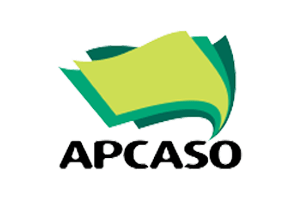The COVID-19 pandemic can be described as one of – if not the most – pressing challenges that the global community has experienced recently, with lasting effects on economies and health systems. It revealed gaps in governance and a lack of preparedness and responsiveness, at all levels, to the risks of pandemics. Furthermore, the pandemic and the interventions required to manage it highlighted deeply seated inequalities and inequities among and within nations, in terms of capacities to provide services related to the management of COVID-19 as an illness (i.e., diagnostics, vaccines and therapeutics) as well as capacities to design systems to adapt socioeconomic processes (i.e., work and education and governance) to the demands of pandemic risk management.[1] Furthermore, it exposed an inadequacy in existing frameworks for international cooperation among national governments in terms of preparing and responding to pandemics.
Coming from lessons from the COVID-19 pandemic, intergovernmental organizations are on the process of crafting documents that aim to guide international actions and mechanisms to prevent, to prepare for and to response to pandemics.
- World Health Organization Draft Pandemic Instrument or the WHO CA+
The WHO CA+ is a document being developed by an Intergovernmental Negotiating Body convened among member states of the WHO. It is being designed to be a legally-binding instrument that aims to address systemic gaps and challenges at the national, regional, and international levels in terms of reducing the risks of pandemics, of increasing pandemic preparedness and response capacities, of the progressive realization of universal health coverage, and of coordinating evidence-based responses and resilience-focused health systems recovery at all levels.
(Click or copy and paste the following link to access the June 2 2023 Draft of the WHO CA+: https://apps.who.int/gb/inb/pdf_files/inb5/A_INB5_6-en.pdf
- Political Declaration of the United Nations Genera Assembly High-Level Meeting on Pandemic Prevention, Preparedness and Response
Released by the United Nations General Assembly during its 78th high-level meeting session the 20th of September 2023, the political declaration calls for stronger international collaboration and coordination to better prevent, prepare for and respond to pandemics.
The wide-ranging document[2] provides a framework for participating nation-states to better prepare health and government systems for possible pandemics. It highlights the UN’s and its member states commitment to work to minimize inequities in timely access to pandemic-related products. Furthermore, it recommends the strengthening of communities and grassroots engagement and involvement in pandemic governance.
(Click or copy and paste the following link to access the UNGA Political Declaration on PPPR: https://www.un.org/pga/77/wp-content/uploads/sites/105/2023/08/Final-text-for-silence-procedure-PPPR-Political-Declaration.pdf?fbclid=IwAR0c6-DcGm1W0hOr9NY-aP99xbk9jgn3bjxLmjuRUoNZ0xykw702RrAZIKM )
- International Health Regulations and ongoing amendments
The IHR is an internationally legally-binding document adopted in 2005 during the 58th World Health Assembly. It focuses on the control of the spread of diseases and health risks across countries. Amendments are being discussed due to observed inadequacies on the side of intergovernmental organizations in facilitating coordinated and equitable responses. Key amendments focus on ensuring global health equity, particularly in terms of
- Determining conditions for the declaration of public health emergency of international concern (PHEIC)
- Coordinated international public health response
- Equitable access to medical countermeasures
- Improving information-sharing
(Click or copy and paste the following link to access the Proposed Amendments to the International Health Regulations: https://apps.who.int/gb/wgihr/pdf_files/wgihr1/WGIHR_Submissions-en.pdf?fbclid=IwAR0rsGEmKL3MKbZ3ml27Pi_owLGUWfDXAejquggr4yeO28HKWeG-vnG-j0c )
The above documents are being designed to guide intergovernmental organizations and their member states in pandemic prevention, preparedness and response, particularly in coordinating efforts and sharing of resources and technologies. The documents also highlight the need to coordinate at the level of communities to minimize the risks of pandemics to the most vulnerable groups.
References:
- A Community Toolkit on Pandemic Prevention, Preparedness and Response. 2023.
https://apcaso.org/a-community-toolkit-on-pandemic-prevention-preparedness-and-response-pppr/
- Pandemic Prevention, Preparedness and Response Accord Q & A. 2023. https://www.who.int/news-room/questions-and-answers/item/pandemic-prevention–preparedness-and-response-accord
- United Nations. Adopting Landmark Declaration, General Assembly Calls for Strengthening High-level International Coordination to Improve Pandemic Prevention, Preparedness, Response. 2023. https://press.un.org/en/2023/ga12533.doc.htm
- World Health Organization. International Health Regulations (2005) – Third Edition. 2016
